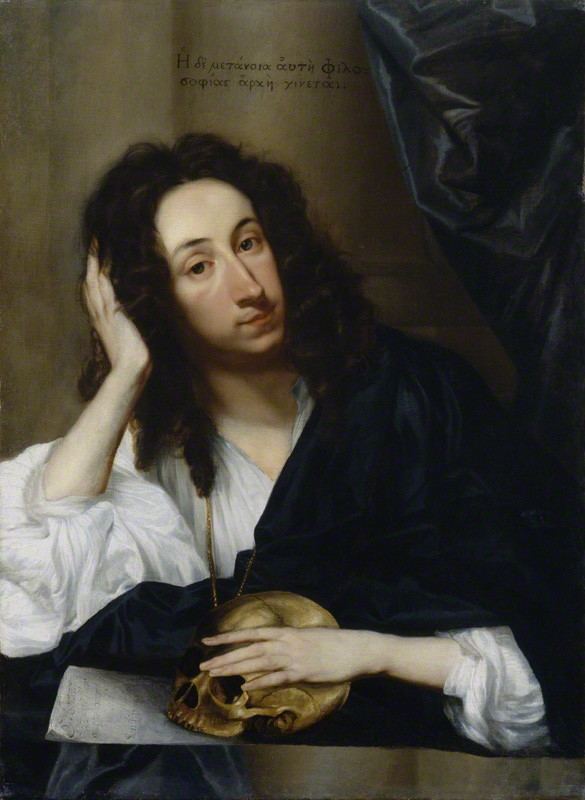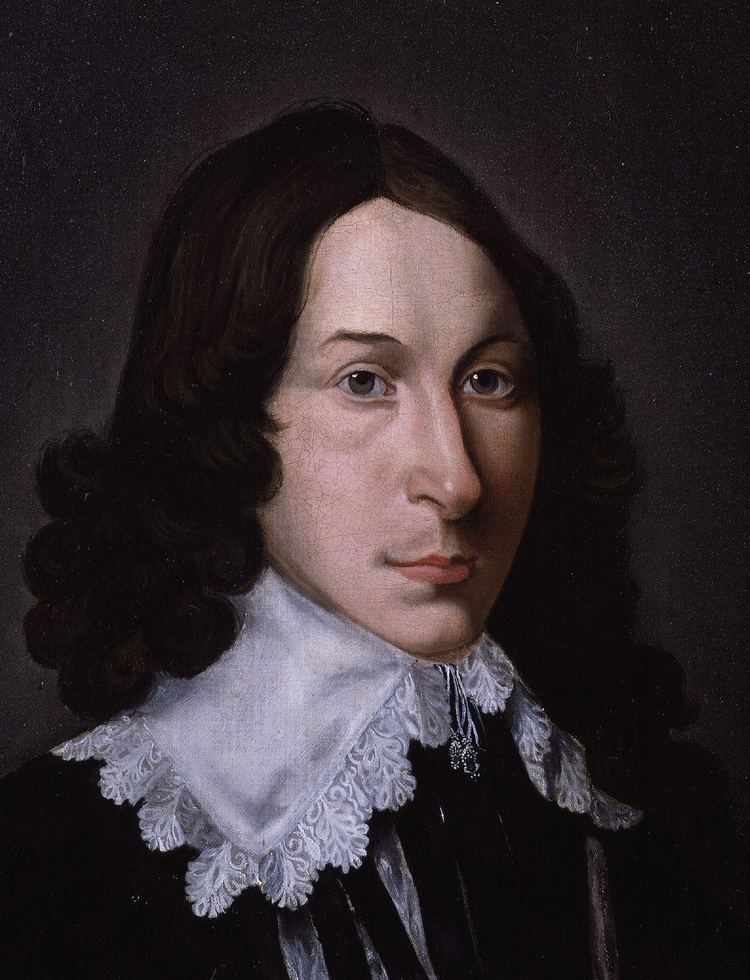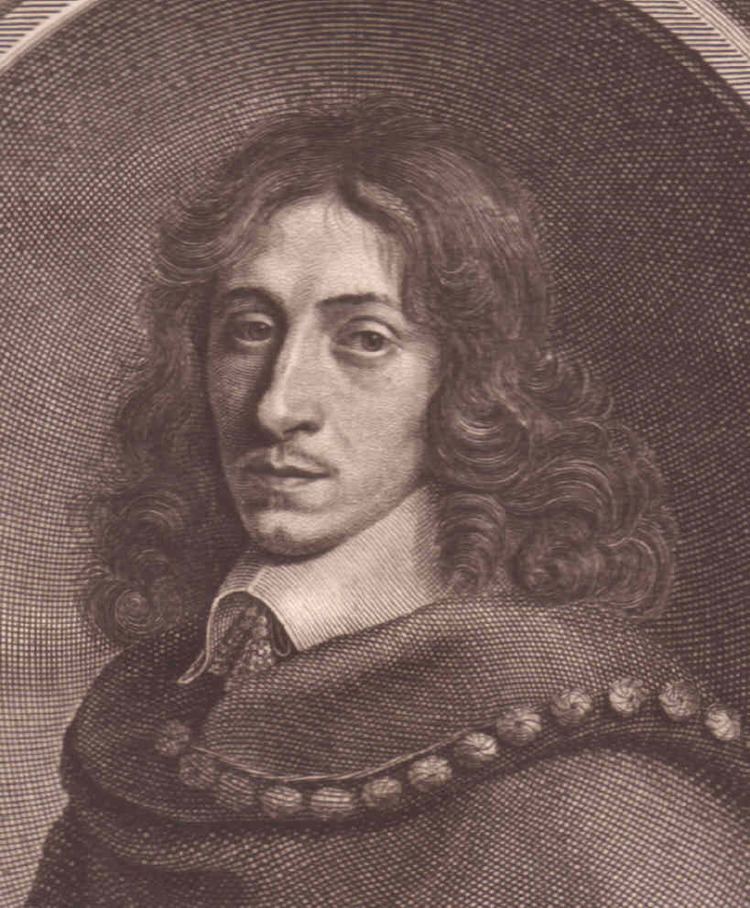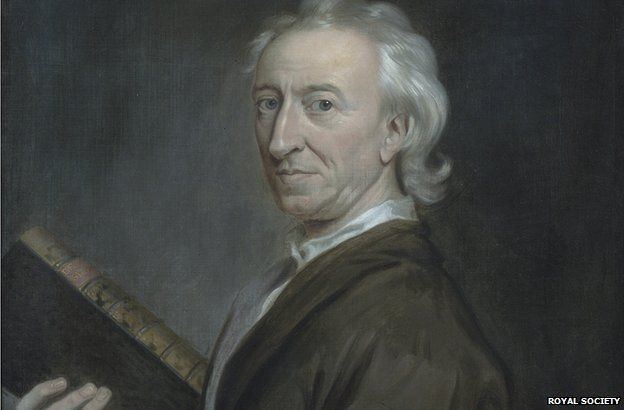Name John Evelyn Role Writer | Education Balliol College | |
 | ||
Died February 27, 1706, London, United Kingdom Books John Evelyn's Diary, Sylva - or A Discourse of Forest, Fumifugium, Acetaria, The life of Mrs Godolphin Similar People | ||
Documenting sayes court and the john evelyn archive
John Evelyn, FRS (31 October 1620 – 27 February 1706) was an English writer, gardener and diarist.
Contents

Evelyn's diaries, or memoirs, are largely contemporaneous with those of his rival diarist, Samuel Pepys, and cast considerable light on the art, culture and politics of the time (the deaths of Charles I and Oliver Cromwell, the last Great Plague of London, and the Great Fire of London in 1666). Over the years, Evelyn's Diary has been overshadowed by Pepys's chronicles of 17th-century life.

John evelyn
Biography

Born into a family whose wealth was largely founded on gunpowder production, John Evelyn was born in Wotton, Surrey and grew up in Lewes, Sussex. While living in Lewes, in Southover Grange, he was educated at Lewes Old Grammar School. After this he was educated at Balliol College, Oxford, and at the Middle Temple. In London, he witnessed important events such as the trials and executions of William Howard, 1st Viscount Stafford and Thomas Wentworth, Earl of Strafford. Having briefly joined the Royalist army and arrived too late for the Royalist victory at the Battle of Brentford in 1642, he went abroad to avoid further involvement in the English Civil War.

In October 1644 John Evelyn visited the Roman ruins in Fréjus, Provence, before travelling on to Italy. He attended anatomy lectures in Padua in 1646 and sent the Evelyn Tables back to London. These are thought to be the oldest surviving anatomical preparations in Europe; Evelyn later gave them to the Royal Society, and they are now in the Hunterian Museum. In 1644, Evelyn visited the English College at Rome, where Catholic priests were trained for service in England. In the Veneto he renewed his acquaintance with the famous art collector Thomas Howard, 21st Earl of Arundel and toured the art collections of Venice with Arundel's grandson and heir, later Duke of Norfolk. He acquired an ancient Egyptian stela and sent a sketch back to Rome, which was published by Father Kircher, SJ in Kircher's Oedipus Aegyptiacus (1650), albeit without acknowledgement to Evelyn.

In Florence he commissioned the John Evelyn Cabinet (1644–46), an elaborate ebony cabinet with pietra dura and gilt-bronze panels, which is now in the Victoria and Albert Museum. It was in his London house at his death, then returned to Wotton, and is very likely the "ebony cabinet" in which his diaries were later found.
He married Mary Browne, daughter of Sir Richard Browne the English ambassador in Paris in 1647.
In 1652, Evelyn and his wife settled in Deptford (present-day south-east London). Their house, Sayes Court (adjacent to the naval dockyard), was purchased by Evelyn from his father-in-law, Sir Richard Browne, in 1653; Evelyn soon began to transform the gardens. In 1671, he encountered master wood-worker Grinling Gibbons (who was renting a cottage on the Sayes Court estate) and introduced him to Sir Christopher Wren. There is now an electoral ward called Evelyn in Deptford, London Borough of Lewisham. It was after the Restoration that Evelyn's career really took off. In 1660, Evelyn was a member of the group that founded the Royal Society. The following year, he wrote the Fumifugium (or The Inconveniencie of the Aer and Smoak of London Dissipated), the first book written on the growing air pollution problem in London.
He was known for his knowledge of trees, and had a friend and correspondent, Philip Dumaresq, who "devoted most of his time to gardening, fruit, and tree culture." Evelyn's treatise, Sylva, or A Discourse of Forest-Trees (1664), was written as an encouragement to landowners to plant trees to provide timber for England's burgeoning navy. Further editions appeared in his lifetime (1670 and 1679), with the fourth edition (1706) appearing just after his death and featuring the engraving of Evelyn shown on this page (below) even though it had been made more than 50 years prior by Robert Nanteuil in 1651 in Paris. Various other editions appeared in the 18th and 19th centuries and feature an inaccurate portrait of Evelyn made by Francesco Bartolozzi.
Evelyn had some training as a draftsman and artist, and created several etchings. Most of his published work, produced in the form of drawings to be engraved by others, was to illustrate his own work. During the Second Anglo-Dutch War, beginning 28 October 1664, Evelyn served as one of four Commissioners for taking Care of Sick and Wounded Seamen and for the Care and Treatment of Prisoners of War (others included Sir William D'Oyly and Sir Thomas Clifford).
Following the Great Fire in 1666, closely described in his diaries, Evelyn presented the first of several plans (Christopher Wren produced another) for the rebuilding of London, all of which were rejected by Charles II largely due to the complexities of land ownership in the city. He took an interest in the rebuilding of St Paul's Cathedral by Wren (with Gibbons' artistry a notable addition). Evelyn's interest in gardens even led him to design pleasure gardens, such as those at Euston Hall.
Evelyn was a prolific author and produced books on subjects as diverse as theology, numismatics, politics, horticulture, architecture and vegetarianism, and he cultivated links with contemporaries across the spectrum of Stuart political and cultural life. In September 1671 he travelled with the Royal court of Charles II to Norwich where he called upon Sir Thomas Browne. Like Browne and Pepys, Evelyn was a lifelong bibliophile, and by his death his library is known to have comprised 3,859 books and 822 pamphlets. Many were uniformly bound in a French taste and bear his motto Omnia explorate; meliora retinete ("explore everything; keep the better") from I Thessalonians 5, 21.
His daughter, Mary Evelyn (1665–1685), has been acknowledged as the pseudonymous author of the book Mundus Muliebris of 1690. Mundus Muliebris: or, The Ladies Dressing Room Unlock'd and Her Toilette Spread. In Burlesque. Together with the Fop-Dictionary, Compiled for the Use of the Fair Sex is a satirical guide in verse to Francophile fashion and terminology, and its authorship is often jointly credited to John Evelyn, who seems to have edited the work for press after his daughter's death.
In 1694 Evelyn moved back to Wotton, Surrey as his elder brother, George, had no living sons available to inherit the estate. Evelyn inherited the estate and the family seat Wotton House on the death of his brother in 1699. Sayes Court was made available for rent. Its most notable tenant was Russian Tsar Peter the Great, who lived there for three months in 1698 (and did great damage to both house and grounds). The house no longer exists, but a public park of the same name can be found off Evelyn Street.
Evelyn died in 1706 at his house in Dover Street, London. Wotton House and estate were inherited by his grandson John (1682–1763) later Sir John Evelyn, Bt.
Family
John and Mary Evelyn had eight children:
Mary Evelyn died in 1709, three years after her husband. Both are buried in the Evelyn Chapel in St John's Church, Wotton.
Evelyn's epitaph (original spelling) reads:
Here lies the Body of JOHN EVELYN Esq of this place, second son of RICHARD EVELYN Esq who having served the Publick in several employments of which that Commissioner of the Privy Seal in the reign of King James the 2nd was most Honourable: and perpetuated his fame by far more lasting Monuments than those of Stone, or Brass: his Learned and useful works, fell asleep the 27th day of February 1705/6 being the 86th Year of his age in full hope of a glorious resurrection thro faith in Jesus Christ. Living in an age of extraordinary events, and revolutions he learnt (as himself asserted) this truth which pursuant to his intention is here declared. That all is vanity which is not honest and that there's no solid Wisdom but in real piety.
Of five Sons and three Daughters borne to him from his most vertuous and excellent Wife MARY sole daughter, and heiress of Sir RICHARD BROWNE of Sayes Court near Deptford in Kent onely one Daughter SUSANNA married to WILLIAM DRAPER Esq of Adscomb in this County survived him – the two others dying in the flower of their age, and all the sons very young except one nam'd John who deceased 24 March 1698/9 in the 45th year of his age, leaving one son JOHN and one daughter ELIZABETH.
Wotton House and estate passed down to Evelyn's great-great-grandson Sir Frederick Evelyn, 3rd Bt (1733–1812). The baronetcy next passed to Frederick Evelyn's cousins, Sir John Evelyn, 4th Bt (1757–1833) and Sir Hugh Evelyn, 5th Bt (1769–1848). Both these two were of unsound mind and the estate was therefore left to a remote cousin descended from the diarist's grandfather's first marriage, in whose family it remains to this day though they no longer occupy the house. The title died out in 1848. However, there are many living descendants of John Evelyn the diarist via his daughter Susanna, Mrs William Draper, and his granddaughter Elizabeth, Mrs Simon Harcourt. There are many descendants of John Evelyn's (the diarist) great-great-grandson, Charles Evelyn Jnr via his daughter Susanna Prideaux (Evelyn) Wright living in New Zealand. Charles Evelyn Jnr was also the father of Sir John Evelyn, 4th Bt, and the last baronet, Sir Hugh Evelyn, 5th Bt.
In 1992 the skulls of John and Mary were stolen by persons unknown who hacked into the stone sarcophagi on the chapel floor and tore open the coffins. They have not been recovered.
Works
Evelyn's Diary remained unpublished as a manuscript until 1818. It is in a quarto volume containing 700 pages, covering the years between 1641 and 1697, and is continued in a smaller book – which brings the narrative down to within three weeks of its author's death. A selection from this was edited by William Bray, with the permission of the Evelyn family, in 1818, under the title of Memoirs illustrative of the Life and Writings of John Evelyn, comprising his Diary from 1641 to 1705/6, and a Selection of his Familiar Letters. Other editions followed, the most notable being those of H. B. Wheatley (1879) and Austin Dobson (3 vols, 1906).
Evelyn's active mind produced many other works, and although these have been overshadowed by the famous Diary they are of considerable interest. They include:
Some of these were reprinted in The Miscellaneous Writings of John Evelyn, edited (1825) by William Upcott.
Evelyn's friendship with Margaret Blagge, afterwards Mrs Godolphin, is recorded in the diary, when he says he designed "to consecrate her worthy life to posterity". This he effectually did in a little masterpiece of religious biography which remained in manuscript in the possession of the Harcourt family until it was edited by Samuel Wilberforce, bishop of Oxford, as the Life of Mrs Godolphin (1847), reprinted in the "King's Classics" (1904). The picture of Mistress Blagge's saintly life at court is heightened in interest when read in connexion with the scandalous memoirs of the comte de Gramont, or contemporary political satires on the court.
Numerous other papers and letters of Evelyn on scientific subjects and matters of public interest are preserved, including a collection of private and official letters and papers (1642–1712) by, or addressed to, Sir Richard Browne and his son-in-law, now held by the British Library (Add. MSS. 15857 and 15858).
In the opinion of the author of his biography in the eleventh edition of the Encyclopædia Britannica, next to the Diary Evelyn's most valuable work is Sylva. Evelyn believed that the country was being rapidly depleted of wood by industries such as glass factories and iron furnaces, while no attempt was being made to replace the damage by planting. Evelyn put in a plea for afforestation, and besides producing a valuable work on arboriculture, he was able to assert in his preface to the king that he had really induced landowners to plant many millions of trees.
Legacy
In 1977 and 1978 in eight auctions at Christie's, a major surviving portion of Evelyn's library was sold and dispersed. The British Library holds a large archive of Evelyn's personal papers including the manuscript of his Diary. The Victoria and Albert Museum has in its collection a cabinet owned by Evelyn which is thought to have housed his diaries. In 2005, a new biography by Gillian Darley, based on full access to the archive, was published. In 2011 a campaign was started to restore John Evelyn's garden in Deptford. William Arthur Evelyn was a descendant.
Things named for Evelyn include:
